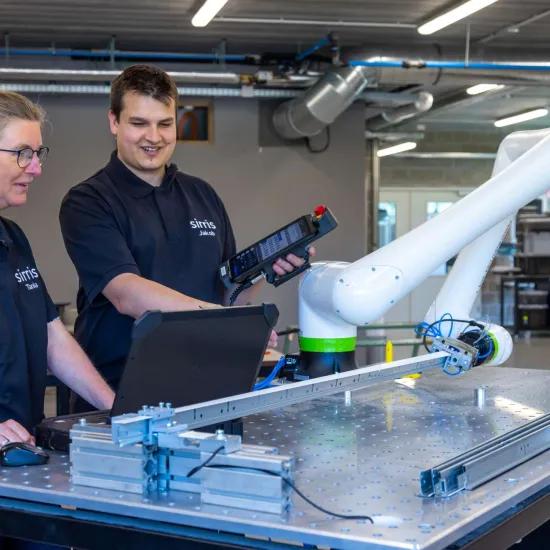A lot of data is collected in modern machines and installations in the production process. Radio Frequency Identification (RFID) on IO-Link simplifies data collection and processing while creating transparency from sensor-actuator to cloud.
What does IO-Link add to RFID?
IO-Link is an industrial communications standard (IEC 6113-9) which enables the exchange of digital and qualitative information between a device (sensor or actuator) and a master (interface of sensors with the higher level). This technology simplifies communication with sensors and actuators and helps reduce costs. The result of an ongoing development, this inexpensive technology with three or five cables enables point-to-point connection without complex wiring and with minimal material needs.
Simplified use of tracking applications
IO-Link was implemented in HF RFID antennas (ISO 15693) for industrial applications. This method of communication provides new functionalities, but also simplifies implementation. As a simple example, take the reading of data in a tag. The main function of an industrial RFID antenna is to make this data available to a higher level. The higher level is the controller (PLC) in most cases. To make ERP tracking data available without IO-Link, a function block configured in the controller's program has to be used. This means that the automation technician has to write a minimum of codes in the program to recover the data and send it to the ERP via the controller. This complicates applications. Thanks to IO-LINK, data can be recovered in the cyclic data exchanged between the IO-Link master and the IO-Link RFID antenna. The master can then make an exchange of targeted data directly with the MES and ERP levels or the cloud applications via an integrated REST API interface and encoding of information in the JSON format.
RFID antennas on IO-Link: for which applications?
There are many applications for RFID antennas on IO-Link. Their use is ideal in conveyance for the identification of work holders because there is very little data to transmit. In machine-tools, magazines and parts can be detected with RFID and IO-Link. During assembly operations, component identifiers are compared with order specifications via RFID to control the manufacturing steps or to check final assembly.
Other application ideas of IO Link are being presented during events of IO LINK GROUP.
This article is part of the Standards Cell Industry 4.0




